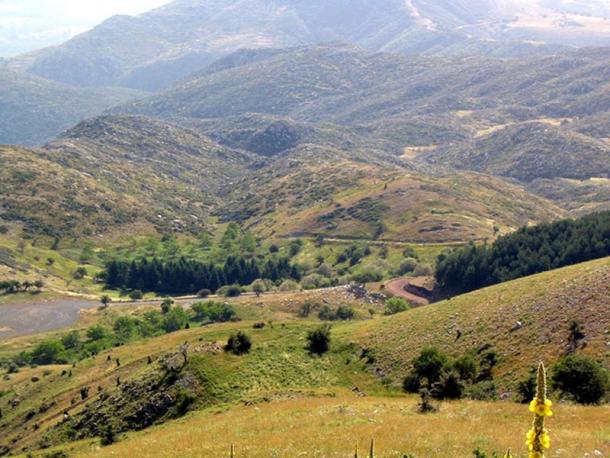Skeleton 3,000 years old lends credence to claims of Ancient Greeks sacrificing humans
The ancient Greeks told myths about human sacrifice, but did they really kill people as some sort of sinister sacrifice to the gods? The 3,000-year-old skeleton of a teenage boy discovered in a mound of ashes of animals sacrificed to the gods indicates some of them may have.
Archaeologists excavating this summer discovered the boy’s remains on an ash altar next to a stone platform on Mount Lykaion in Arcadia of the southern Peloponnese. For about 1,000 years before he was killed, Greeks sacrificed animals there.
Though no other human remains have been found in the ash mound, just 7 percent of it has been excavated so far, reports the Associated Press. The ash mound is 100 feet (30 meters) in diameter and 4.9 feet (1.5 meters) high.
Archaeologist David Gilman Romano, professor of Greek archeology at the University of Arizona, who is working on the dig, told the AP, as reported in the Toronto Star online: “Whether it’s a sacrifice or not, this is a sacrificial altar ... so it’s not a place where you would bury an individual. It’s not a cemetery.”
The upper part of the boy’s skull was missing, and whoever placed the body there interred it between two lines of stones on an east-west orientation. Stone slabs covered his pelvic area.
The research team says it’s too early to say how the boy died.
Ancient writers said there was human sacrifice at Mount Lykaion, which was associated with Greek cults for centuries. The practice of human sacrifice has been only rarely found by archaeologists working in the ruins of the ancient Greeks and never on the Greek mainland, AP states.

A view from Mount Lykaion (Wikimedia Commons photo/Danno1)
Lycaon was mythical king of Arcadia who was said “to have sacrificed a child to Zeus on the altar he had raised on the highest peak of the mountain (Lykaion), on account of which he was changed into a wolf,” says The Dictionary of Classical Mythology, Religion, Literature and Art.
There was another legend that Lycaon had 50 impious sons. Zeus visited their home in the guise of a beggar or humble workman to test their contempt.
“They followed the advice of Menelaus, the eldest, and set before him the entrails of a boy which had been mixed with the sacrifice. The god however threw the table over and killed Lycaon and his sons with lightning, with the exception of Nyctimus, the youngest, whom Gaea saved by firmly holding the right hand of Zeus. During the reign of Nyctimus the deluge connected with the name of the Deucalion covered the land as a punishment for the impiety of Lycaon and his sons.”

Deucalion and Pyrrha, 1635 painting by Giovanni Maria Bottalla (Wikimedia Commons)
A variant of the story says Zeus spared Lycaon but killed his children after they offered him Nyctimus’ remains in a soup.
“Some scholars believe that the myth is related to the cannibalism that was a part of the cult of Zeus Lycaeus, in which it was believed that those who ate human flesh were turned into wolves and wandered in the wild for eight or ten years before being able to return to human form—and then only if they did not eat any more human flesh,” says The Facts on File Encyclopedia of World Mythology and Legend.
The Mount Lykaion Excavation and Survey Project site, online here, states: “In the ancient Greek region of Arcadia in the southern Peloponnesos, the sanctuary of Zeus on Mt. Lykaion stands out for its great fame, mysterious rituals and wide-ranging significance.
“The earth of the altar contained burnt stones, many small animal bones, tiny fragments ofand 4th century BC pottery, iron knives, clay figures, coins from Aegina, a clay figure of a bird, and two small bronze tripods. Kourouniotes found no evidence of human bones, only animal bones (mostly cow and pig).
“The ash altar was the area used to burn the dedications of animals and several ancient authors including Plato, Theophrastus and Pausanias mention human sacrifice at the site.”
The AP says the mountain was inhabited for about 5,000 years, though it is unknown how long the adherents of Zeus sacrificed to the Greek supreme being there. No one knows why anyone would be on the barren mountain if not for the purpose of cultic sacrifice, though.
Top image: Researchers are analyzing the 3,000-year old skeleton of an adolescent boy excavated recently at Mount Lykaion in Greece. (Greek Culture Ministry photo)
By Mark Miller



















